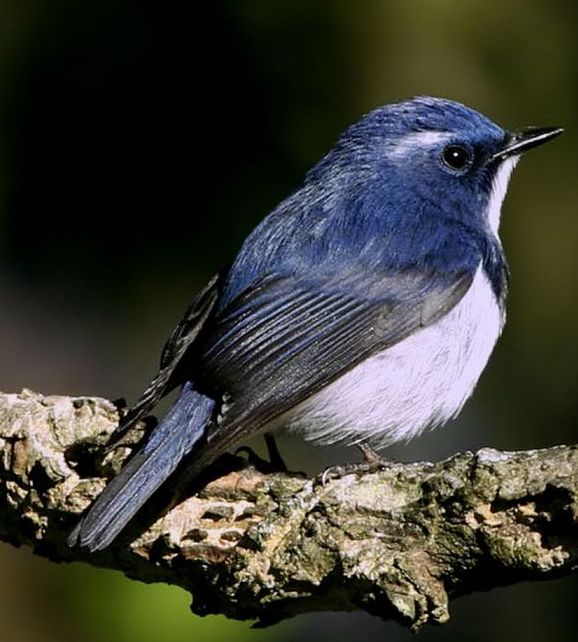- Ultramarine Flycatcher
Taxobox
name = Ultramarine Flycatcher
status = LC | status_system = IUCN3.1
status_ref = [IUCN2006|assessors=BirdLife International|year=2004|id=51700|title=Ficedula superciliaris|downloaded=2007-04-21 Year assessed: 2004, LC: "described as 'common' in at least parts of its range" ]

image_width = 240px
image_caption = Ultramarine Flycatcher "Ficedula superciliaris aestigma"
regnum =Animal ia
phylum = Chordata
classis = Aves
ordo = Passeriformes
familia = Muscicapidae
genus = "Ficedula "
species = "F. superciliaris"
binomial = "Ficedula superciliaris"
binomial_authority = (Jerdon, 1840)The Ultramarine Flycatcher or the White-browed Blue Flycatcher ("Ficedula superciliaris") is a small arboreal
flycatcher in theficedula family that breeds in the foothills of theHimalayas and winters in southernIndia .Distribution
Summer: Common breeding visitor to the western Himalayas, from
Kohat inNWFP ,Pakistan east throughKashmir toUttaranchal (western race), and intergrading with inNepal with the eastern race "aestigma" which continues in the eastern Himalayas throughBhutan toArunachal Pradesh toTibet . Breeding between 2000-2700m, occasionally as low as 1800 and as high as 3200m. Also in the lower hills ofMeghalaya andNagaland ,Khasi andCachar hills, sometimes considered a third race; winter movements of this population is not known cite book
last = Ali
first = Salim
authorlink=Salim Ali (ornithologist)
coauthors =Sidney Dillon Ripley
title = Handbook of the Birds of India and Pakistan, 2nd ed.,10 vols
year = 1986/2001
edition = 2nd
publisher=Oxford University Press
address = New DelhiBird Number 1421-1422 (races "F.s.superciliaris" and "F.s.aestigma"), vol. 7, p. 166-168.] . Habitat: Open, mixed forests ofoak ,rhododendron ,pine ,fir , etc., occasionally orchards.Winter: Central
India fromDelhi south to northernMaharashtra ,Goa , northernMaharashtra , and westward toAndhra Pradesh andOrissa . Wintering populations in the eastern states, possibly from Nepal/Sikkim, are mixed: a good part of this population also have white supercilium and basal tail patches (see description below).Description
Somewhat smaller than a
sparrow (ca. 10cm) and with astocky build. The male is deep blue above, sides of head and neck are deep blue, and a prominent white patch runs from centre of throat, through breast to belly. The amount of white on the brow and tail show clinal variation from West to East along the Himalayan foothills, which is sometimes taken to distinguish three races:
* The western race from the western Himalayas has a distinctive whitesupercilium and white bases to the outer tail feathers.
* The eastern race ("aestigma") from the eastern Himalayas lacks distinct white patches.
* The population from the southAssam hills (sometimes designated a third race "cleta") completely lack any supercilium.Usually singly, though sometimes in mixed hunting parties in the winter. Keeps largely to the low trees and bushes, feeding among the foliage canopy, not venturing much into the open. Constantly jerks up its tail, often accompanied by fluffing of head feathers and "trrr" note, especially in proximity of nest. Diet is mainly insects.
Nesting
* Season: middle of April to early July
* Nest: soft structure of fine moss with some strips of bark and fine grass, lined with hair and rootlets, place in holes or clefts in trees, at heights up to seven meters, or in a depression on a steep bank. Readily takes to nest boxes in hill station gardens.
* Eggs: 3 to 5, usually 4, olive greenish to dull stone-buff, densely freckled all over with reddish brown, or in another type, mostly around the large end, forming a cap. Average size 16x12.2 mm.References
Wikimedia Foundation. 2010.
